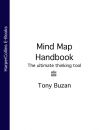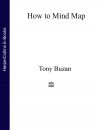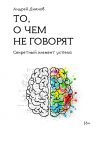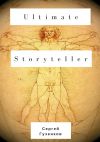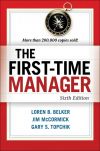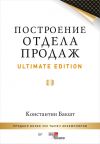Правообладателям!
Представленный фрагмент книги размещен по согласованию с распространителем легального контента ООО "ЛитРес" (не более 20% исходного текста). Если вы считаете, что размещение материала нарушает ваши или чьи-либо права, то сообщите нам об этом.Читателям!
Оплатили, но не знаете что делать дальше?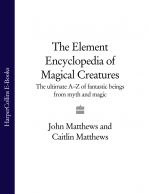
Текст бизнес-книги "The Element Encyclopedia of Magical Creatures: The Ultimate A–Z of Fantastic Beings from Myth and Magic"
Автор книги: John Matthews
Раздел: Жанр неизвестен
Текущая страница: 4 (всего у книги 7 страниц)
ALBERICH
The king of the dwarves in Teutonic and Scandinavian mythology, Alberich lives in a magnificent underground palace, the walls and ceiling of which are covered with gemstones. He guards a great amount of treasure, including a magic ring, the mighty sword Balmung, a belt which confers strength upon its wearer, and a cloak of invisibility. In common with most dwarves in this tradition, he is a famous smith and artificer, responsible for many of the great objects of power possessed by the gods – among them Freya’s necklace. He is an essential character of the ‘Volsunga Saga’ and ‘Nibelungenlied’, which describe the theft of this great treasure and the retribution that followed. Alberich is a major figure in Richard Wagner’s operatic ‘Ring Cycle’, which retells the Teutonic myths with psychological overtones.
ALECTO
One of the Furies from Greek and Roman mythology, this hideous creature is shaped like a human with bat wings and the head of a dog. Like her sisters, she was born from drops of blood that fell on the earth when the great Titan Uranus was castrated by his son, Zeus. Her name means ‘the Unceasing’ and she is said to be responsible for war, pestilence and revenge.
ALFA
In Scandinavian and Teutonic mythology, the Alfa, or elves, are divided into two tribes: the Svartalfar (dark elves) and the Liosalfar (light elves). The Liosalfar are bringers of light and are extremely beautiful, being tall, with skins whiter than the sun. They live in a realm between the Earth and Heavens known as Alfhime. The Svartalfar, on the other hand, live beneath the earth and their skins are blacker than a night without stars. They are famous smiths and responsible for many fabulous weapons and magical armour. Despite their evil reputation, they are associated with fertility and had a strong following among the Norse peoples. Both races are said to have originated from the maggots that ate the flesh of the cosmic giant Ymir. J.R.R. Tolkien drew heavily on their history in the creation of the elvish races which play such an important part in The Hobbit and The Lord of the Rings.
ALICANTO
This creature from the folklore of Chile emerges at night, shedding a golden or silvery light from its great wings. The Alicanto is a strange bird-like monster which likes to eat gold and silver, and if it discovers a rich vein of ore, will continue to eat until it is too heavy to fly. Gold prospectors in the Chilean foothills are always on the lookout for the Alicanto in the hope that it will lead them to golden riches. The wily bird, however, leads them only to their deaths, flashing its wings enticingly until they fall into a bottomless ravine.
ALICORN
An alternative name for the European Unicorn.
ALKLHA/ALICHA
A great cosmic dragon from the mythology of the Buryat people of ancient Siberia. Its wings were black and so large that when spread they covered the entire sky – overcast days were said to indicate that the Alklha had opened its wings. The creature appears to have lived in a region high above the Earth, because from here it made periodic attacks on the sun and moon. To this day, the marks on the surface of the moon are said to be the claw or teeth marks of the Alklha. Anyone among the Buryat people, seeing a section of the sun or moon obscured – such as might happen during an eclipse – believed that the Alklha was active and would throw stones into the sky to discourage it. The gods finally found a solution to this troublesome creature by cutting it in half. One half remained in the heavens, the other on the Earth; that way, whenever the Alklha attempted to consume either sun or the moon, the heavenly sphere would fall straight through the monster and resume its place in the sky.
ALKONOST
A Russian version of the Siren, this being is half woman and half bird. She lives in the land of the dead with her counterpart the Sirin. Her role is to torment the souls of the damned by singing terrible songs to them in her harsh voice and tormenting them with vile punishments.
ALLOCAMELUS
One of the many strange and bizarre creatures found in the bestiaries of European heraldry. The Allocamelus has the head of a donkey and the body and legs of a camel.
ALMA
A creature originating in Siberia and living in the northern forest and wastelands. The Alma has also been seen in Kazakstan and the Caucasus. The name means ‘Wild Man’ in Mongolian. It is a fur-covered humanoid like the Bigfoot or Sasquatch found in the United States. Gigantic and humanoid in shape, it is covered in shaggy brown, black or red fur. Sightings of Almas have been reported since the 17th century, the most recent being in 1948 by the Russian scientist, Alexander G. Pronin, who said it looked very like a man but with much longer arms.
In the mid-19th century, a female Alma with reddish-black hair and with a deeply sloped forehead was captured in Abkhazia in the western Caucasus. It was named Zanya. She reportedly mothered six children by different men of which four survived. These offspring looked like normal humans except for being of much darker complexion and immensely stronger than men. Descendants of these Alma children are said to survive to this day and were investigated by Russian historian, Boris Porshney. He was struck by their Negroid features and powerful jaw muscles. He attempted to unearth the remains of Zanya, but they only succeeded in finding the remains of her original descendants whose skeletal structure was nearer to that of a Neanderthal than a modern human. This find has led to speculation as to whether the Alma is a living survivor of the prehistoric early humans, the Neanderthal.
ALOES
One of a number of strange beasts reported by early explorers of the New World, the Aloes appears in a 16th-century work by the antiquary Ambroise Pare, On Monsters and Marvels, in which it is described as a sea creature which had the head of a goose, a very long neck and four large flippers. It may have been a partial memory of the seal with a bird standing on its back. This is typical of many such descriptions penned by the first European explorers of the New World.
ALOJA
In Catalan tradition in Spain, the Aloja are the fairies who guard the fate of human beings. They oversee the process of birth and are responsible for the provision of plenty. They are similar in nature to the Fates (Moirae).
ALPHYN
This heraldic beast looks like a tiger. It derives from an Arabic chess piece, the equivalent of the European knight of the chessboard. The Arabic name for this piece is ‘al-fil’ and it is usually depicted as an elephant.
ALSVID/ALSWIDER
The name of one of the two great horses (the other was Arvak) that pull the Chariot of the Sun in Norse mythology. Alsvid means ‘all swift’. The gods are said to have fixed a pair of bellows beneath the shoulders of the horse to cool it down.
ALTAMAHA-HA
This water monster inhabits the Altamaha River and the marshes around Darien in Georgia, USA. The creature has not been sighted since the early 1960s, but it is said to be 10–40 ft long with a body 1–2 ft wide. It resembles a giant eel although it is very much bigger than the largest recorded eel.
ALYEONG
In Korean myth, Alyeong was the first queen of Shilla.
When the hero Pak Hyeokkeose was born, elders went in search of a wife for him, looking for a girl who had certain significant features. They found what they were looking for in a Saryang village where a creature had appeared that was a cross between a chicken and a dragon (or Kyery-ong). A child was born from the sides of this creature who was a human girl except that she had a chicken’s beak. When she was bathed, this beak fell off. She was married to the hero when she was 13 years old.
AMAROK
A giant wolf in the mythology and folklore of the Inuit people of the United States and Canada. Its name is curiously similar to that of Ragnarok, the Norse name for the day of doom when the whole world will be swallowed by the giant wolf Fenris. The Amarok is said to be responsible for the deaths of many hunters on the lonely Arctic tundra.
AMBIZE
Another of the strange creatures reported by 16th-century travellers, this beast was said to inhabit the seas around the West African coast, especially the Congo delta. It was described as having the body of an enormous fish, but with the head of a pig or ox. It had human hands instead of fins and a round flat tail like a beaver. Though considered a delicacy by local fishermen, it was extremely difficult to catch due to its great size.
AMEMAIT/AM-MIT/ AMMIT/AMMUT
A giant flesh-eating monster from Egyptian mythology, the Amemait was responsible for consuming the hearts of souls condemned for earthly crimes and misdemeanours. Its name can be translated as ‘Corpse Eater’, ‘Bone Eater’ or simply ‘Devourer’. The Amemait is described as being part hippopotamus, part lion, and part crocodile, and is often depicted as accompanying the god Osiris or as a guardian to the gateway of temples.
AMGWUSNASOMTAKA
Amgwusnasomtaka is the name of the crow-mother of the Hopi Indians of the North American south-west. She has a sharp beak and two warrior sons called Hu who have bull’s horns and tails. They are represented in the purificatory dances of the Hopi with whips made of yucca plants. Each child who is part of these rites is beaten by dancers representing the Hu katchinas (spirits). Amgwusnasomtaka holds the whips of her sons and replaces them from her supply when they wear out. When each child has been beaten in these initiatory rites, she then submits to the same treatment, receiving the lashes upon her back. According to this mystery, Crow-Mother sympathizes with the children in this ritual, which teaches them respect for all the katchinas.
A-MI-KUK
A monster reported by the Inuit people of the Bering Strait and Alaska. Described as a huge, heavy creature with a moist and slimy skin, the A-Mi-Kuk lives in the sea but is also capable of burrowing under the earth to emerge in inland lakes. Instead of legs, it has four unnaturally long human arms and hands, which it uses both to walk upon and to capture its prey. It hunts mostly fishermen and people foolish enough to bathe in the sea, but has also been known to consume large quantities of fish and saltwater birds.
AMMUT
A goddess of the Underworld in Egyptian mythology, her name means ‘Devourer of the Dead’, and she is described as consuming the hearts of those who have led evil lives on Earth. Ammut is often shown in the Hall of the Two Truths, where the hearts of dead people are weighed against a feather to discover whether they have done good or evil in their lives. The head of Ammut is that of a crocodile, her front legs and torso belong to a lion or leopard, and her back legs are those of a hippopotamus.
AMPHIPTERE
Although this is one of the many strange creatures found in European heraldry, the Amphiptere also seems to have been known about more widely. Certainly, anyone bearing this device on their shield was considered to be extremely dangerous and best avoided, especially in battle. In its heraldic form, the Amphiptere is shown with the body of a winged serpent, razor sharp claws and fanged mouth.
AMPHISBAENA
The classical Greek writer Lucan, who described the Amphisbaena as a winged reptile with an extra head on the end of its long prehensile tail, first mentions this creature in his book Pharsalia. The creature’s name means ‘to go both ways’. It became a favourite device of the compilers and embellishers of medieval bestiaries, who often showed this creature in the margins of their books. It is generally shown with its tail curved above its back, grasping its extra head in the jaws of its normal mouth. In this position, it was able to travel by rolling along the ground like a wheel. It must have been a formidable adversary to encounter, since it could run in either direction, possessed the legs of an eagle with claws to grip its victims, and eyes that gave forth beams of light in the darkness. Wounds inflicted by the Amphisbaena generally failed to heal and brought death to the person who had been bitten. Yet, despite its evil nature, it was much sought-after during the Middle Ages for its medical properties. According to Lucan and his fellow-writer Pliny the Elder, its dried skin was an excellent cure for rheumatism. It is described as living in the deserts of Libya and may possibly be based on an actual reptile that is capable of running in both directions, and that raises its tail like a scorpion when threatened. It appears among the great bestiary of creatures in European heraldry.
AMPHISIEN
A variant of the Cockatrice, often found in heraldry. Unlike the ordinary Cockatrice – but like the Amphisbaena – it had an additional head at the end of its tail. Its glance turned anyone who saw it to stone.
AMUN
One of the primal creator gods of Egyptian mythology, Amun is sometimes portrayed as a goose. He is also associated with the ram, which is regarded as a sacred animal and is a reflection of Amun’s role as a fertility god. He is also sometimes seen as a snake in which form he is called Kemetaf (‘He Who Has Completed His Time’). Beginning as a god of Thebes, Amun eventually became a supreme state god in the new kingdom of Egypt. He was said to abide in all things, which may account for his many forms.
ANALOPOS
This antelope-like creature was reportedly found near the Euphrates river in Mesopotamia. It could only be captured by being lured into a thicket where its horns became entangled. A magnificent statue of a beast answering this description was found during the excavations of the ancient Chaldean city of Ur.
ANAMAGQKIU
In Algonquian myths, the Anamagqkiu are the underworld spirits whose chieftains are bears. They dragged Moqwaoi, the wolf-brother of the Great Hare, Manabusch under a frozen lake to his death. Manabusch revenged his brother by killing the bear-chiefs, but the other Anamagqkiu caused a great inundation that flooded the world. Manabusch hid up a pine tree which extended itself to keep him from death.
ANAMTABOGA
A great dragon in the myths and legends of Java and Indonesia. It rules over the kingdom of the dead with its wife, Dewi Nagagini.
ANANSI
The spider god and trickster of West African folklore and mythology. Originally a creator god, Anansi has become most widely known as a crafty and cunning trickster who uses his wits to dupe other animals and humans. Early tales describe him stealing the sun and playing jokes on everyone. Stories are told of him along the Gold Coast, the Ivory Coast, in Sierra Leone, Togo, Youruba, Warri, the Cameroons, the Congo and Angola. He is also known everywhere in the West Indies and other parts of the New World and is probably one of the most popular folklore characters among the African-American population of America. He has many names: among the Hausa he is called Gizo, while the Alkan-speaking peoples call him Kwaku Anansa; in South Carolina in the Sea Island folktales he has become Miss Nancy and Gulla Aunt Nancy; in Haiti he is known as Ti Malice. But it is as Anansi that he is best known, from Trinidad to the Congo. It is unclear whether his original form is human or spider, but he is always represented as taking spider form when in trouble, enabling him to scuttle away and hide from the consequences of his japes. His character is similar to that of Hare and Tortoise in the stories of the Bantu peoples, and to Brer Rabbit in southern USA. Yet there is an ambiguity in the way he is perceived: ‘Woe to he who would put his faith in Anansi’ and ‘The wisdom of the spider is greater than that of all the world put together’ are two sayings heard widely among West African people. The Ashanti and Yoruba people tell how Anansi’s children discovered a pot always full of food and broke it, causing widespread famine.
A story from Ghana tells how, during a bush fire, an antelope allowed the spider to hide in her ear and guide her to safety. When the fire was behind them, the spider ran down to the ground and thanked the antelope for her kindness. Soon after, the antelope gave birth to a baby, which spent its first days hiding in the bushes where its mother was grazing. One unlucky day, hunters arrived and spotted the mother. The little one crouched under the shrubs and the mother leapt up to catch the hunters’ attention, staying just out of range. After an hour, the hunters gave up and went back to search for the young antelope. But they searched in vain and left the forest empty handed. Later, the mother came back but could not find her baby either. Then she heard a familiar voice. It was Anansi, who had surrounded the baby with a dense screen of spider webs as a way of thanking the antelope for her help.
ANANTA/ANANTA SESHA
The thousand-headed serpent of Hindu mythology, Ananta’s name means ‘Endless’ or ‘Infinity’, from which one may guess at its size. Its creation occurred when Balarama, the brother of the sun god, fell asleep by the seashore; out of his mouth crawled the great serpent, consuming his body as it came, until only the head remained. The movement of the vast creature caused the churning of the primal waters, from which the sacred drink of immortality was formed. Like many great mythological serpents, the Ananta will destroy creation at the end of each age. Its mouths spew forth fire and its bite is poisonous, bringing instant death. Yet, at times, it will coil itself in such a way that the sun god Vishnu may sleep in the shade of seven of its mighty heads.
ANASKELADES
A monstrous donkey occurring in the folklore of Crete. Originally, this creature was represented as a normal-sized donkey found wandering the countryside. Anyone foolish enough to attempt to ride Anaskelades found themselves in great trouble, as at once it grew to the size of a mountain and flung them off. In more recent times, it is said to present itself as a bobbin or cotton reel lying in the road. If this is picked up, it then assumes the form of a giant donkey.
ANAYE
The Anaye or Alien gods of the Navaho Indians of south-west North America were of a monstrous and titanic nature. They included the headless Thelgeth, the feather-backed Tsenahale and the Binaye Ahani – twins without legs and arms who killed with their eyes. All the Anaye were killed except for Old Age, Poverty, Cold and Famine who were allowed to continue living so that men would not grow complacent but continue to pray to the gods against the evils that the Anaye brought upon humanity.
ANCIENT SERPENT
An honorific given by the Piute Indians of North America to a huge creature that dwelt in Lake Pyramid, Nevada. Whenever the lake bubbled and formed whirlpools, the Piute believed the ancient serpent was seeking a victim.
ANDROSPHINX
The proper name for the Sphinx in Egyptian mythology. The endless Sphinx was a guardian of the cosmos and an important symbolic aspect of the astrological beliefs of the ancient Egyptians. Only referred to as the Androsphinx when depicted with a human head, it is also known as Hor-em-Asken, a name which may be translated as ‘Horus of the Horizon’, signifying the rising of the astrological planets. The statue of the Androsphinx which lies in the shadow of the Great Pyramid at Giza is the most famous representation of this creature, there represented with the body of a lion and the head of a woman wearing a Pharaonic headdress.
ANDURA
An alternative name for the Hoga, a lake monster from the folklore of the Indians of South America.
ANGONT
A giant and venomous serpent in the traditions of the Huron people of the United States. It lived in lonely and desolate places such as lakes, rivers, ancient forests and in great dark caverns beneath the earth. The Angont was said to stretch forth from within its hiding-place to overwhelm unwary travellers, inflicting disease and death upon all who came within its range. Native American shamans sometimes went in search of it, hoping to make use of its skin in their rituals; however, no luck ever came to anyone who encountered this creature.
Правообладателям!
Представленный фрагмент книги размещен по согласованию с распространителем легального контента ООО "ЛитРес" (не более 20% исходного текста). Если вы считаете, что размещение материала нарушает ваши или чьи-либо права, то сообщите нам об этом.Читателям!
Оплатили, но не знаете что делать дальше?